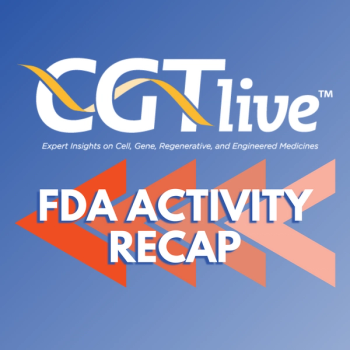
X-Linked Retinitis Pigmentosa Trial Exceeds Enrollment
Applied Genetic Technologies is also developing AGTC-401 and AGTC-402 for the treatment of achromatopsia.
This content originally appeared on our sister site,
The SKYLINE trial of AGTC-501, a recombinant AAV vector-based gene therapy developed for the treatment of X-linked retinitis pigmentosa (XLRP) being developed by
The trial initially had a planned target enrollment of 12 but a total of 14 patients have been enrolled across the high and low dose groups.
Sue Washer, president and CEO of AGTC, said in a news release that the company is pleased to have reached this milestone in the clinical development of AGTC-501, which positions the company to announce interim three-month trial results in the second quarter of 2022.
“We are looking forward to adding to the growing body of evidence that supports the potential of our product candidate and further validates the meaningful and durable benefits seen to date in treated patients,” Washer added in the release. “Specifically, we believe the mobility data, in conjunction with the visual acuity and visual sensitivity data from the high dose group in the SKYLINE trial, will potentially serve as a strong indicator of success for not only the final 12-month endpoint for the SKYLINE trial, but also for the Company's VISTA trial.”
READ MORE:
Washer added in the release that the company is grateful to the patients and investigators participating in its clinical trials for their help completing enrollment with a goal of bringing this potential therapeutic option to patients suffering from the progressive vision loss resulting from XLRP.
SKYLINE is a multi-site expansion of the ongoing Phase 1/2 study in which patients are randomized to either a high or low dose of AGTC-501 with the primary objective to identify the proportion of treated eyes that demonstrate improvement from baseline in measures of visual sensitivity and visual acuity as well as the patient’s ability to navigate a mobility maze more successfully under varying light and challenge conditions. Importantly, this is the first trial that has the potential to demonstrate a correlation of visual sensitivity and visual acuity with the maze outcome, a key functional endpoint in the VISTA trial.
AGTC recently released updated data from the ongoing Phase1/2 clinical trial of AGTC-501, which demonstrated that at 12 months, 50% of patients in the high dose groups were considered responders to treatment based on visual sensitivity and that treatment resulted in a statistically significant improvement in best-corrected visual acuity (BCVA) across all treatment groups in patients where the macula was treated.
Additionally, key findings on a patient’s baseline characteristics, combined with a novel application of machine learning techniques, are being applied to the SKYLINE and VISTA trials to potentially further enhance the ability to identify likely responders. Importantly, at 12 months post treatment, primary outcome measures of safety continued to indicate AGTC-501 to be generally safe and well-tolerated at all doses. The SKYLINE and VISTA trials are intended to support registration if they are able to show continued safety and comparable response rates.
According to the news release, the company anticipates releasing the following, subject to any continuing impact of COVID-19:
- 24-month results from the ongoing Phase 1/2 clinical trial of AGTC-501 in the third quarter of calendar year 2022;
- 12-month results from the SKYLINE trial in the first quarter of calendar year 2023; and
- interim results from the VISTA trial in the first half of calendar year 2023.
X-linked Retinitis Pigmentosa (XLRP) is an inherited condition that causes progressive vision loss in boys and young men. Characteristics of the disease include night blindness in early childhood and progressive constriction of the visual field. In general, XLRP patients experience a gradual decline in visual acuity over the disease course, which results in legal blindness around the 4th or 5th decade of life.
About AGTC-501
AGTC-501 (laruparetigene zosaparvovec), the company’s lead gene therapy development program, uses an engineered AAV vector to insert a stabilized and functional copy of the Retinitis Pigmentosa GTSase Regulator (RPGR) gene into a patient’s photoreceptor cells. AGTC-501 is comprised of that stabilized RPGR gene and a promoter that was specifically selected due to its ability to drive efficient gene expression in rods and cones, maintain photoreceptor function and delay disease progression in large animal, naturally occurring preclinical models of XLRP.
In addition, AGTC pointed out that published NHP studies have demonstrated that AGTC’s proprietary AAV capsid has as much as twice the transfection efficiency in photoreceptors compared to capsids used in competing programs. AGTC was granted FDA orphan drug designation in 2017, as well as European Commission orphan medicinal product designation in 2016, for its gene therapy product candidate to treat XLRP caused by mutations in the RPGR gene.
Newsletter
Stay at the forefront of cutting-edge science with CGT—your direct line to expert insights, breakthrough data, and real-time coverage of the latest advancements in cell and gene therapy.










































